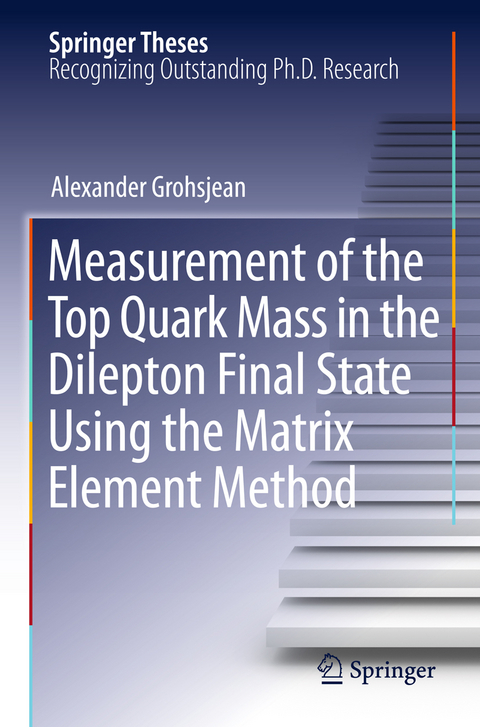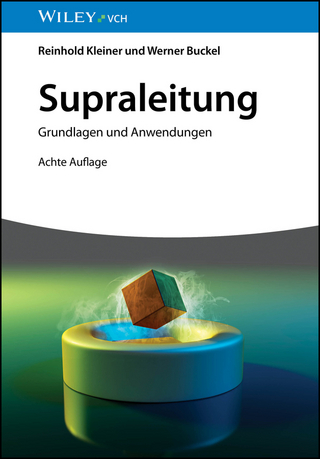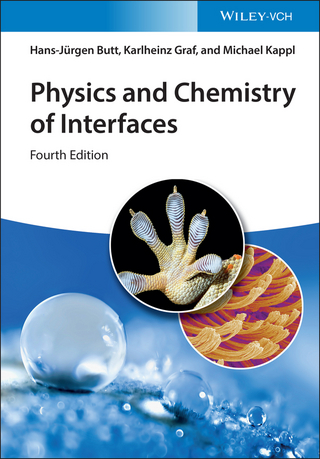
Measurement of the Top Quark Mass in the Dilepton Final State Using the Matrix Element Method
Seiten
2012
Springer Berlin (Verlag)
978-3-642-26501-3 (ISBN)
Springer Berlin (Verlag)
978-3-642-26501-3 (ISBN)
The top quark discovered in 1995 at the Fermilab Tevatron Collider is the heaviest known elementary particle. This book sets out for the first time an adaptation of a novel measurement technique that could have greatly improved the calculation of its mass.
The main pacemakers of scienti?c research are curiosity, ingenuity, and a pinch of persistence. Equipped with these characteristics a young researcher will be s- cessful in pushing scienti?c discoveries. And there is still a lot to discover and to understand. In the course of understanding the origin and structure of matter it is now known that all matter is made up of six types of quarks. Each of these carry a different mass. But neither are the particular mass values understood nor is it known why elementary particles carry mass at all. One could perhaps accept some small generic mass value for every quark, but nature has decided differently. Two quarks are extremely light, three more have a somewhat typical mass value, but one quark is extremely massive. It is the top quark, the heaviest quark and even the heaviest elementary particle that we know, carrying a mass as large as the mass of three iron nuclei. Even though there exists no explanation of why different particle types carry certain masses, the internal consistency of the currently best theory-the standard model of particle physics-yields a relation between the masses of the top quark, the so-called W boson, and the yet unobserved Higgs particle. Therefore, when one assumes validity of the model, it is even possible to take precise measurements of the top quark mass to predict the mass of the Higgs (and potentially other yet unobserved) particles.
The main pacemakers of scienti?c research are curiosity, ingenuity, and a pinch of persistence. Equipped with these characteristics a young researcher will be s- cessful in pushing scienti?c discoveries. And there is still a lot to discover and to understand. In the course of understanding the origin and structure of matter it is now known that all matter is made up of six types of quarks. Each of these carry a different mass. But neither are the particular mass values understood nor is it known why elementary particles carry mass at all. One could perhaps accept some small generic mass value for every quark, but nature has decided differently. Two quarks are extremely light, three more have a somewhat typical mass value, but one quark is extremely massive. It is the top quark, the heaviest quark and even the heaviest elementary particle that we know, carrying a mass as large as the mass of three iron nuclei. Even though there exists no explanation of why different particle types carry certain masses, the internal consistency of the currently best theory-the standard model of particle physics-yields a relation between the masses of the top quark, the so-called W boson, and the yet unobserved Higgs particle. Therefore, when one assumes validity of the model, it is even possible to take precise measurements of the top quark mass to predict the mass of the Higgs (and potentially other yet unobserved) particles.
Experimental Environment.- Event Reconstruction and Simulation.- The Top Quark and the Concept of Mass.- The Matrix Element Method.- Measurement of the Top Quark Mass.- Improved Mass Measurement.- Conclusion.
| Erscheint lt. Verlag | 5.11.2012 |
|---|---|
| Reihe/Serie | Springer Theses |
| Zusatzinfo | X, 150 p. 73 illus., 25 illus. in color. |
| Verlagsort | Berlin |
| Sprache | englisch |
| Maße | 155 x 235 mm |
| Gewicht | 254 g |
| Themenwelt | Naturwissenschaften ► Physik / Astronomie ► Atom- / Kern- / Molekularphysik |
| Naturwissenschaften ► Physik / Astronomie ► Hochenergiephysik / Teilchenphysik | |
| Schlagworte | D0 experiment • Lepton • Mass Measurement • Matrix Element Method • Quark • Top Quark |
| ISBN-10 | 3-642-26501-4 / 3642265014 |
| ISBN-13 | 978-3-642-26501-3 / 9783642265013 |
| Zustand | Neuware |
| Informationen gemäß Produktsicherheitsverordnung (GPSR) | |
| Haben Sie eine Frage zum Produkt? |
Mehr entdecken
aus dem Bereich
aus dem Bereich
Buch | Softcover (2024)
Wiley-VCH (Verlag)
59,90 €


